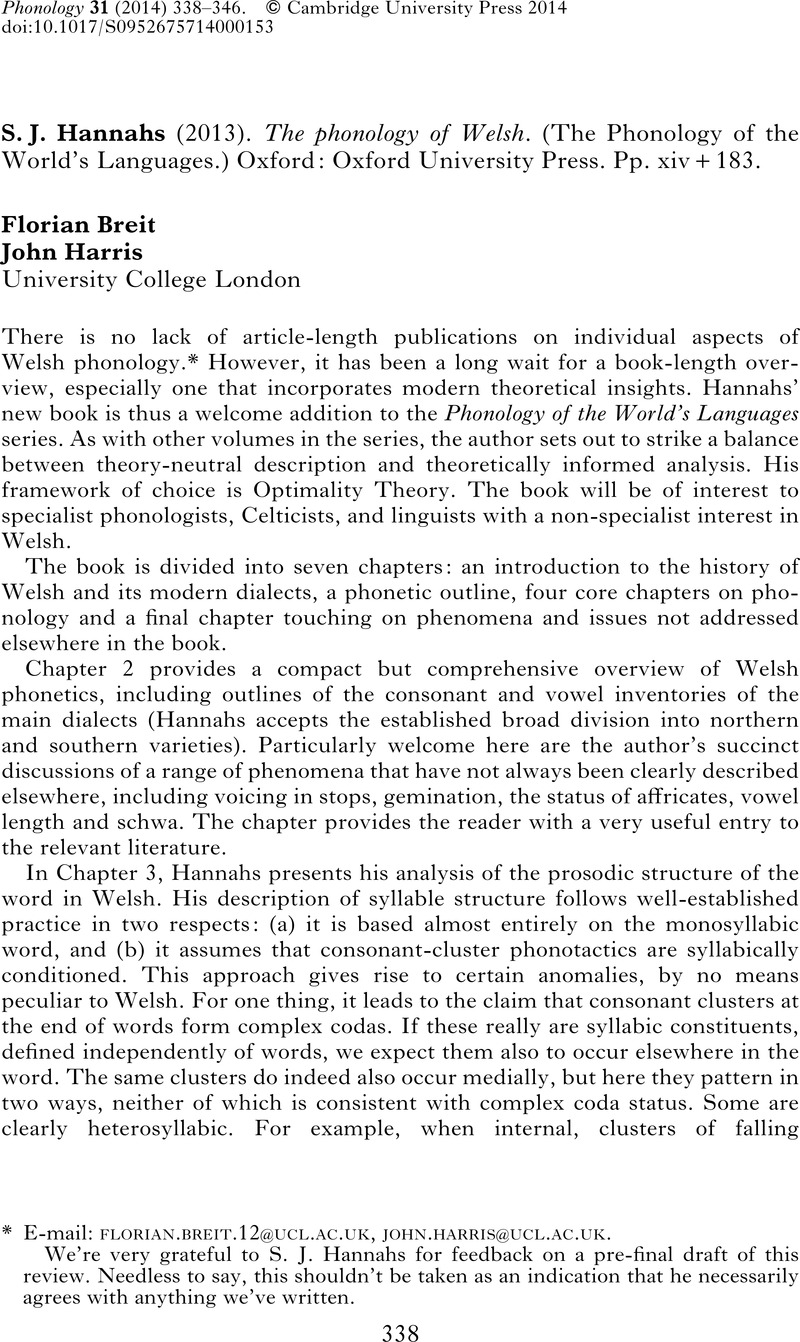No CrossRef data available.
Article contents
Reviews
Published online by Cambridge University Press: 15 September 2014
Abstract
An abstract is not available for this content so a preview has been provided. Please use the Get access link above for information on how to access this content.

- Type
- Review Article
- Information
- Copyright
- Copyright © Cambridge University Press 2014
References
Buczek, Anita (1995). Lenition and fortition: consonant mutation in Welsh. In Gussmann, Edmund (ed.) Licensing in syntax and phonology. Vol. 1. Lublin: Folium. 187–216.Google Scholar
Bybee, Joan L. & Moder, Carol L. (1983). Morphological classes as natural categories. Lg 59. 251–270.Google Scholar
Bybee, Joan L. & Slobin, Dan I. (1982). Rules and schemas in the development and use of the English past tense. Lg 58. 265–289.Google Scholar
Cyran, Eugeniusz (1997). Resonance elements in phonology: a study in Munster Irish. Lublin: Folium.Google Scholar
Cyran, Eugeniusz (2010). Complexity scales and licensing in phonology. Berlin: De Gruyter Mouton.CrossRefGoogle Scholar
Davis, Stuart & Cho, Mi-Hui (2003). The distribution of aspirated stops and /h/ in American English and Korean: an alignment approach with typological implications. Linguistics 41. 607–652.CrossRefGoogle Scholar
Dell, François (1995). Consonant clusters and phonological syllables in French. Lingua 95. 5–26.CrossRefGoogle Scholar
Iosad, Pavel (2012). Representation and variation in substance-free phonology: a case study in Celtic. PhD dissertation, University of Tromsø.Google Scholar
Steriade, Donca (1999). Phonetics in phonology: the case of laryngeal neutralization. UCLA Working Papers in Linguistics: Papers in Phonology 3. 25–145.Google Scholar




